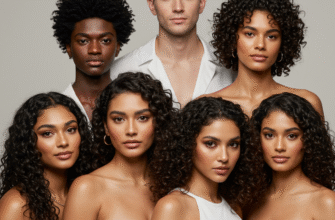We’re constantly swimming in a sea of images and messages telling us what “healthy” is supposed to look like. Often, it’s a very narrow picture: lean, toned, maybe fitting into a specific size. But take a moment to look around you, really look. People come in an incredible variety of shapes and sizes. Does that mean only a select few can truly be healthy? Absolutely not. The truth is, health isn’t a one-size-fits-all outfit; it’s a deeply personal state that manifests differently on every single body.
Trying to squeeze everyone into the same visual mold for health ignores the beautiful complexity of human biology and lived experience. What vibrant health looks like on your neighbour, your best friend, or even a sibling could be vastly different from what it looks like on you, and that’s perfectly okay. It’s time we dismantled the myth of a single “health aesthetic” and embraced a more inclusive and realistic understanding.
The Genetic Blueprint
Before we even take our first breath, genetics lays down a fundamental blueprint. Our genes influence a vast array of physical characteristics, including our basic body structure, height potential, where our bodies tend to store fat, our natural metabolic rate, and even our predisposition towards building muscle. Some people are naturally slender with a fast metabolism, finding it hard to gain weight, while others might have a more robust frame and gain muscle or fat more easily. Neither starting point is inherently “healthier” than the other; they are simply different genetic expressions.
Think of it like different breeds of dogs. A chihuahua and a Great Dane have vastly different bodies, but both can be perfectly healthy examples of their breed. Similarly, humans have inherent variations. Fighting against your genetic predispositions can be an exhausting and often futile battle. Understanding your unique genetic foundation is the first step towards appreciating why your healthy body might look different from someone else’s.
Lifestyle: The Personal Touch
While genetics provides the blueprint, our lifestyle choices are the builders and decorators. How we move, what we eat, how we manage stress, and the quality of our sleep all significantly impact our overall well-being. However, even here, individuality reigns supreme.
Consider activity. For one person, vibrant health might involve training for marathons. For another, it could mean daily walks, regular yoga sessions, or finding joy in gardening. The type and intensity of movement that supports one person’s health might be inadequate or even detrimental for another. Someone with joint issues might thrive with swimming, while someone else needs high-intensity bursts to feel their best. Health is found in consistent, enjoyable movement that suits the individual’s capacity and preferences, not in adhering to a specific exercise trend.
Nutrition is another key area where diversity matters. While general principles like eating plenty of fruits, vegetables, and whole grains apply broadly, individual needs and tolerances vary. Food sensitivities, cultural food practices, ethical considerations, budget, and simple taste preferences shape our diets. A healthy eating pattern for one person might look quite different from another’s, yet both can be equally nourishing and supportive of well-being. The focus should be on sustainable patterns that provide energy and make the body feel good, rather than rigid, universally applied diets.
Beyond the Scale: What Health Feels Like
One of the biggest mistakes we make is equating health solely with weight or appearance. Health encompasses so much more! It’s about:
- Energy Levels: Do you generally feel energetic enough to do the things you want and need to do?
- Physical Function: Can you move comfortably, carry groceries, play with kids or pets, and engage in activities you enjoy without excessive pain or limitation?
- Mental Clarity: Does your lifestyle support focus and cognitive function?
- Emotional Resilience: How well do you cope with everyday stress?
- Restorative Sleep: Do you wake up feeling reasonably rested most days?
- Strong Immune System: Do you generally recover well from minor illnesses?
These internal states and functional capacities are far better indicators of genuine health than striving for a specific look dictated by external pressures. Someone might fit the conventional “ideal” body type but struggle with chronic fatigue, poor digestion, or constant anxiety. Conversely, someone in a larger body might possess incredible strength, endurance, and vitality.
Internal Markers Tell a Deeper Story
Even beneath the surface, health markers differ. Things like blood pressure, cholesterol levels (within healthy ranges, of course), and blood sugar regulation can vary significantly between individuals, even those with similar external appearances. Genetics, again, plays a role, as do lifestyle factors accumulated over time. Two people might eat similar diets and exercise routines, yet their internal metabolic responses could differ. This highlights why regular check-ins with healthcare providers, focusing on individual health data rather than comparisons, are important for understanding one’s personal health status.
Important Note: Comparing your body or health journey to others, especially based solely on images seen online or in media, can be detrimental to your mental and physical well-being. Everyone’s starting point, genetic makeup, lifestyle, and health priorities are unique. Focus on your own progress and how you feel, not how you measure up against an often unrealistic or irrelevant external standard.
Embracing Body Diversity in Health
Recognizing that health looks different on every body is liberating. It frees us from the pressure of conforming to a narrow, often unattainable ideal. It allows us to focus on what truly matters: cultivating habits that make us feel strong, energized, and capable in the unique body we inhabit. This means celebrating movement we enjoy, nourishing ourselves with foods that make us feel good, prioritizing rest, and managing stress in healthy ways.
It involves shifting the focus from aesthetics to function and feeling. Ask yourself: What can my body do? How does it feel? Am I providing it with the care it needs to thrive, whatever its shape or size? Health is a dynamic state, a journey, not a destination defined by a number on a scale or a clothing tag. It’s about respecting our individuality and pursuing well-being in a way that honours our unique biology and life circumstances. When we embrace this diversity, we create a healthier, more compassionate world for everyone.








